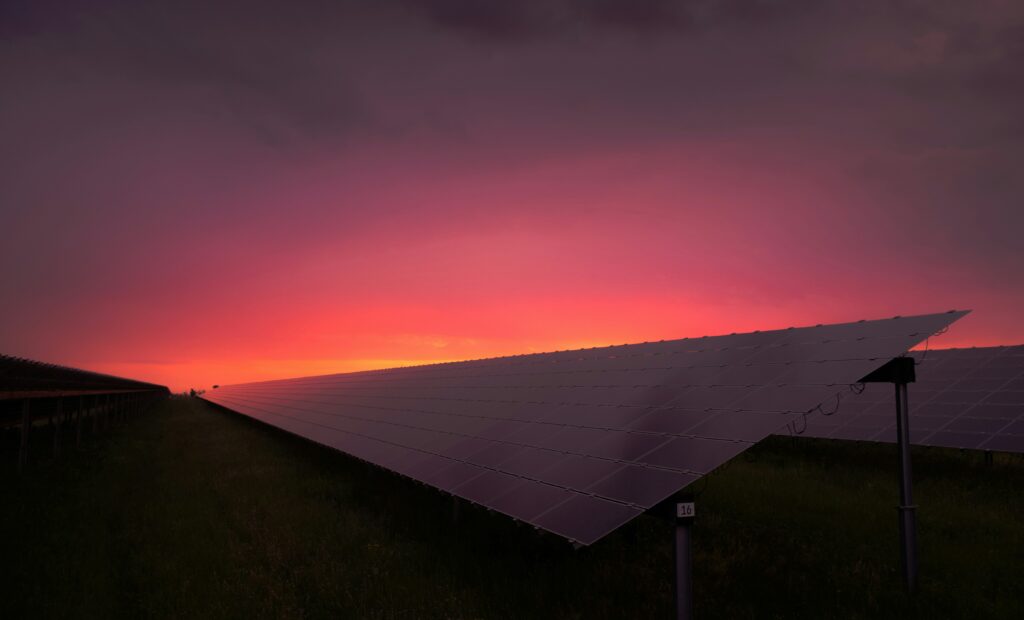For European companies established in China, reducing carbon emissions is no longer an option but a commercial and regulatory requirement. Between tighter European standards and Beijing’s energy ambitions, climate performance is increasingly a precondition for market access.
In this context, we focus our analysis on the purchase or self-generation of green electricity.
China is now the world’s largest producer of renewable energy, with more than 1,400 GW of installed capacity as of 2024. Yet, greening one’s electricity supply remains a demanding exercise: self-generation requires significant investment, and green energy purchases rely on specific legal frameworks.
Faced with dual regulatory pressure, the reduction of indirect emissions linked to electricity (Scope 2) is emerging as a strategic lever—traceable, enforceable, and recognised by the GHG Protocol, which uses the market-based method relying on contractual traceability.
Certainly, this lever does not address all climate challenges—particularly in sectors with a high Scope 3 footprint—yet it often constitutes the first credible step in a structured climate strategy.
We set aside other levers such as energy efficiency, material substitution, or low-carbon logistics to focus on a legal and operational analysis of the Chinese framework and the modalities of access to certified renewable electricity.
Regulatory pressure is a deep-rooted trend both in China and Europe
In Europe, the Corporate Sustainability Reporting Directive (CSRD), which requires large companies to conduct structured and enforceable climate reporting, is only a starting point. Despite the initial intentions of the Omnibus Directive, the cascading effect upstream in the value chain is already clear: regulated groups are gradually transferring their traceability and emissions reduction requirements to all their suppliers through contractual arrangements. A new regulatory wave is in preparation for exporting SMEs and mid-sized companies, driven by three structuring texts: the Ecodesign for Sustainable Product Regulation (ESPR), the generalisation of product passports, and a strengthened framework for environmental claims (greenwashing).
On this last point, the Green Claims Directive, originally designed to regulate environmental claims, has seen its negotiations suspended and may be withdrawn. Still, the Empowering Consumers for the Green Transition (ECGT) Directive, adopted in 2024, remains fully in force. This Directive requires all environmental claims to be supported by verifiable evidence, maintaining regulatory pressure on climate-related communications.
China, for its part, is moving fast. Although it achieved its 2020 targets for reducing carbon intensity two years ahead of schedule, the 2025 objectives appear more difficult to reach (a 12% reduction by the end of 2024 versus the expected 18%). Nevertheless, this dynamic is driven by an accelerated transformation of the energy mix and massive investments.
We need to insist on the fact that carbon intensity does not mean absolute emissions reduction. Yet, it is precisely this absolute reduction that European standards demand. Companies must therefore deal with both Chinese and European reference frameworks.
Adding to this is fragmentation: each province in China applies its own quotas and targets, creating a “double constraint” for manufacturers—in terms of both total emissions and the share of renewable energy.
Since August 2023, GECs (Green Electricity Certificates) have been the only recognised proof of green electricity consumption in China. This centralisation aims to unify the system, reduce dependence on international certificates (I-REC), and ensure traceability. The withdrawal of I-REC from the Chinese market as of March 2025 reinforces this direction.
While this change clarifies the compliance framework, it also creates increased dependence on the national platform. The system gains integrity and readability but becomes more vulnerable to future regulatory developments.
Technical and legal guide to green electricity in China
Companies seeking to decarbonise their electricity in China mainly have three options, each offering a different balance between flexibility, cost, and traceability.
- Green Electricity Certificates (GECs):
GECs represent the official proof of the renewable origin of one MWh of electricity, with one GEC corresponding to 1,000 kilowatt-hours of green electricity. Eligibility has been extended to almost all renewable sources, with one exception: hydroelectric projects commissioned before 2023 are not included. To be recognised and have accounting value in an audit, GECs must be purchased and then cancelled on the national platform (China Green Electricity Certificate Trading Platform–NEA) and linked to actual consumption.
This system offers great flexibility and is particularly suited to sites with modest consumption (under 10 GWh/year) or to companies in the exploratory phase of their decarbonisation strategy. This 10 GWh/year threshold is primarily a profitability threshold: below this volume, the fixed costs and complexity of structuring a PPA are often too high to be relevant. Below this threshold, it is therefore more efficient to buy GECs. For a significant number of European companies, especially smaller SMEs and mid-sized firms, GECs are the most economically viable path to initiate their Scope 2 decarbonisation. This strategy also helps to avoid premature investment in potentially burdensome PPA structures.
- On-site self-generation:
The self-generation of renewable energy, most often solar, directly on the consumption site offers ideal traceability and partial protection against electricity price volatility. However, implementation can prove complex in practice. For many companies that lease their facilities, this option requires tough negotiations with the property owner regarding the sharing of costs, benefits, and the duration of an investment (often 20 to 25 years) that frequently exceeds the lease term. These challenges add up to technical constraints related to building structures or land availability. Self-generation is thus a realistic solution mainly for industrial operators who own their buildings or work within very specific long-term contractual arrangements.
- Green PPA (Power Purchase Agreement):
This is a long-term direct purchase contract for green electricity, associated with the cancellation of the corresponding GECs. This mechanism, regulated in China by major grid operators such as the State Grid Corporation of China (SGCC) and the Southern Grid, requires solid legal and operational structuring.
In return for this complexity, the PPA allows for a fully enforceable Scope 2 reduction aligned with the most demanding international standards. It does so by establishing a direct contractual link with a specific generation facility, thus meeting the strictest quality criteria of the GHG Protocol’s market-based accounting method. Chinese PPAs encourage multi-year transactions, with a preference for annual agreements supplemented by monthly ones. Prices can be fixed, floating, or a combination of both, and may be indexed to cover future operating cost variations. The “environmental premium,” reflecting the value of environmental attributes, is a key component of the price.
Any PPA requires thorough due diligence, including scenario analysis, stress testing, and assessment of double materiality (the environment’s impact on the company and vice versa). As with any strategic investment, responsible finance rules fully apply. This is not a “China risk,” but a requirement for professionalisation.
Aligning with local priorities: an often-underestimated lever
In China, integration into the local ecosystem is an accelerator, not a constraint.
Energy policies are driven by provinces, each with its own ambitions. Local authorities are not mere regulators: they are strategic public investors, seeking industrial projects aligned with their priorities.
A concrete example: the Green Electricity Trading Rules in the Southern region (Guangdong, Guangxi, Yunnan, Guizhou, Hainan) create a stable framework to facilitate projects and structure a regional green energy market.
Adopting this lens changes the strategic posture: it is no longer simply about complying with local requirements but about proposing value-creating solutions for the territories. Viewed as partners, the provinces can become powerful allies in accelerating a low-carbon transition.
Could this be an opportunity to turn compliance into a strategic partnership? Presenting one’s low-carbon project as a contribution to provincial ambitions—rather than a constraint imposed—allows a more productive mindset.
Energy consumption quotas are often seen as obstacles. But when properly interpreted, they become markers of strategic alignment. A proactive company, through a PPA or an energy efficiency plan, helps a Chinese province meet its goals. Such a company becomes part of the local manufacturing ecosystem.
This positioning potentially opens the door to preferential treatment, sustainable partnerships, or negotiation leverage. It is no longer passive compliance, but a territorial influence strategy.
Beyond compliance—becoming a catalyst for collective decarbonisation
Decarbonising electricity in China has become a necessary step. With more than 1,500 GW of renewable capacity already reached, China offers a fertile ground for credible climate strategies—including for SMEs and mid-sized firms. Several contacts in the provinces of Zhejiang and Guangdong have confirmed their willingness to accelerate the integration of green energy into industrial sites in support of their energy mix targets.
Committing to a decarbonisation policy means going beyond compliance to become an active contributor to the local transition. A company that takes the initiative strengthens both its climate strategy and its legitimacy with stakeholders: customers, regulators and authorities.
The most advanced companies go further: they rally their ecosystem, pool volumes, and become the engine of collective transformation. Because green electricity—traceable and immediately deployable—often creates the foundation of a credible climate trajectory, including Scope 3. It is a strategic marker, recognised by both Brussels and Beijing, that paves the way for more ambitious low-carbon strategies.
For more information, contact Marion Tuduri (m.tuduri@leaf-legal.com), the author, or Bruno Grangier (b.grangier@leaf-legal.com).
To read the french version: DECARBONER GRACE A L’ENERGIE VERTE | LinkedIn
This publication is for informational purposes only






